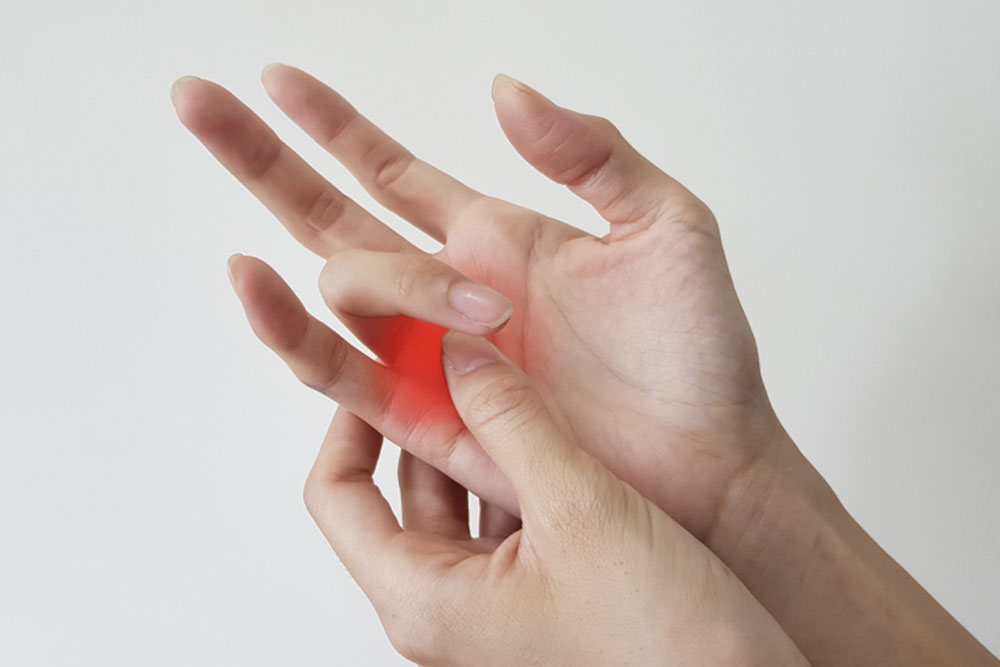Types and Causes of Trigger Fingers in Adults and Children
A disorder called trigger finger, also known as stenosing tenosynovitis, causes one of the fingers or thumbs to become trapped, bent, and snap back straight, much like pulling and releasing a trigger. A trigger finger’s major cause is when the tendons that wrap around the fingers cannot glide back to the original position. The trigger finger can affect any finger, even the thumb, and can range in intensity from moderate to severe.
Types of trigger finger
Depending on the severity of the condition, several treatment options are available, such as rest, prescriptions, splinting, or surgery. There are two different types of trigger fingers:

Primary trigger finger
This form of trigger finger is brought on by inflammation and thickening of the tendon sheath, which protects the tendon and enables it to pass easily through the finger. Due to the inflammation and thickness, the tendon becomes obstructed as it passes through the sheath, producing a distinctive triggering motion.
Secondary trigger finger
This kind of trigger finger is typically brought on by an underlying condition, such as gout, diabetes, or rheumatoid arthritis. In these circumstances, the underlying condition’s secondary result is the tendon sheath’s thickness and inflammation.
Trigger finger causes
If you are wondering what causes a sudden trigger finger, it is important to understand the internal structure of the finger.
When the fingers return to the original erect position in normal conditions, these tendons glide into the sheath enveloping them. However, this process is interrupted in the trigger finger, and the tendon cannot return to its original position. As a result, the finger remains in the bent position.
The condition commonly occurs in the morning and causes stiffness in the fingers. In most cases, a swollen area around the affected fingers might be slightly warm or painful.
There are no definitive trigger finger causes. Some of the popular explanations for trigger fingers include the following:
Due to the repeated and long-term use of the fingers, the tendons and muscles lose their strength. This causes an inability to contract and return to their original position.
Inflammation of the finger tendons results in a swollen area, which occupies a large amount of space. This inflammation can be caused due to any bacterial or viral infection within the body. It can also be caused due to local infections.
The constant movement of the finger irritates the finger muscles and tendons. In some cases, this causes the formation of a lump. It is also known as a nodule. Repeated irritation to the nodule causes it to become larger in size and firmer. This is one of the main reasons for morning trigger finger causes.
Bilateral and multiple trigger finger causes
A trigger finger that affects both hands is referred to as a bilateral trigger finger. Bilateral trigger finger causes also include extra deposition of proteins, known as amyloidosis. When the trigger finger affects more than one finger, it is known as a multiple trigger finger. Many factors can be multiple trigger finger causes, so it is advisable to consult a healthcare provider for a comprehensive diagnosis and treatment plan. Causes behind bilateral and multiple trigger fingers:
Forceful or repetitive hand motions
Health issues
Injury
Age
Genetics
Trigger finger in children
Trigger fingers in children are more prevalent in the thumbs. In advanced cases of pediatric trigger fingers, surgical involvement might be needed as the finger cannot be straightened on its own. The trigger finger in a child can be caused because of either a congenital abnormality or an injury. In most cases of trigger fingers in children, the patients are between the age of one to four. Trigger fingers in children may or may not be painful. However, as the tendons are still developing, the chances of inflammation are slightly higher in children. Thus, it is important to keep a close eye on the symptoms.
How to reduce the effects of the trigger finger?
Since the trigger finger has no definitive cause, it is almost difficult to avoid it. However, some things may cause trigger finger, which you must keep an eye on:
Stop the overuse of fingers
Overusing fingers may cause the fingers to lose flexibility and strength in the muscles and tendons. People in occupations where you need to use your fingers extensively, such as professional writers, typists, embroidery workers, etc., are at a greater risk of having a trigger finger.
To avoid causing a trigger finger, you must practice finger exercises and give it proper rest. Exercises such as squeezing a sponge ball or playing with the clay can help strengthen the finger muscles. You can also apply an ice pack in case of inflammation or pain.
Regular finger exercise
Conditions that have degenerative effects on the bone, such as osteoporosis and rheumatoid arthritis, are lead causal agents of the trigger finger. If you have been diagnosed with these conditions, you must do finger exercises regularly. This can help delay trigger finger causes or even omit them completely.
To sum up
There is no definitive cause for trigger fingers. However, constantly doing things that require fine motor movements, aging, and association with other health conditions can be considered trigger finger causes. Finger exercises and rest can help in reducing the occurrence of trigger fingers in adults.


